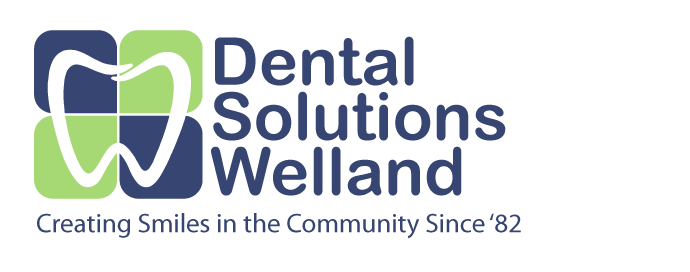Pediatric Dentistry
Dental Development
 You have a total of 20 primary teeth as a child, and they usually erupt by age 2.
You have a total of 20 primary teeth as a child, and they usually erupt by age 2.
What is the typical tooth eruption sequence of primary teeth?
- At roughly 6-8 months old, the first 2 primary central incisors (front teeth) erupt on the bottom.
- From 8-10 months, the four upper incisors will come in.
- At 10-16 months, the lower lateral incisors and the first primary molars erupt.
- At 18-22 months the cuspids (“canines”) emerge.
- When the child is 2-3.5 years old, all 20 baby teeth are typically in place.
Most of the time, baby teeth have fallen out by 6-7 years of age, with a few remaining until as late as 12-14. During this length of time, the baby teeth are important for basic mouth functions like speaking and eating, but primarily they are important for maintaining the space within the jaw for adult teeth.
At 6 or 7, the first adult teeth come in. They are known as the “first molars,” or the “six-year molars.” They emerge at the rear of the mouth, behind the last baby teeth. They do not replace any primary teeth.
As a tooth nears the end of it’s life, it will begin to loosen at the root. It’s okay for children to wiggle their loose baby teeth. However, it’s bad to use force on a tooth that’s not ready to come out. When a tooth comes out at the right time, there is not much bleeding to be expected.
Once the primary teeth start to emerge, children enter a period of “mixed dentition,” because children will have both primary and permanent teeth at once. Teeth form under the gum before they erupt. The crown forms below the gum line, prior to the roots.
Eventually, the 20 baby teeth are replaced by the 32 adult teeth, and the order of eruption varies. Parents should not worry so much about the order that teeth are emerging in, and look for signs of misaligned or crooked teeth.
Why do the new adult teeth look yellow?
This is normal. However, it could also be caused by medicine your child may have took, a trauma to the primary tooth, or by too much fluoride use.
Dental Safety
Here are some tips for protecting your teeth:
- Always use seat belts.
- Avoid tripping hazards that could crack your teeth.
- If there is an accident while playing, see your dentist right away.
Your Child’s First Visit
At your first visit, Dr. Yajaman:
- Examines your teeth and gums to ensure they are in good shape
- Can spot serious health problems early
- Demonstrates how to brush and floss your teeth properly
- Professionally cleans your teeth and removes any debris that contribute to cavities and gum disease
The goal is to have your child visit the dentist before there is a problem with their teeth. Children are prone to gum disease just like adults.
Three reasons to go for dental check-ups:
- To see if your current home care routine is effective
- To reveal any problems before they become worse
- By going to the dentist, you actively prevent oral issues from occurring
Dr. Yajaman will also take x-rays. X-rays will reveal any present decay between your teeth and also show if your teeth are coming in at the proper angles. Dr. Yajaman may also mention fluoride treatments, if necessary.
Once your child has permanent molars, Dr. Yajaman may suggest sealing them to protect them from cavities. A sealant is a kind of plastic that is put on the chewing surface of the molars. The plastic seals the tooth and makes the tooth surface smooth.
When you go for a check up, Dr. Yajaman can tell you if crooked or crowded teeth may cause problems. In many cases, crooked teeth straighten out as your jaw grows and the rest of the teeth come in. If they do not straighten out, your dentist can suggest ways to treat this, or refer you to an orthodontist. An orthodontist is a dental specialist with 2 to 3 years of extra university training in this area.
Cavities are the main problem children have with their teeth. Some primary (or baby) teeth will be in your child’s mouth until age 12. Broken teeth or teeth that are infected can hurt your child’s health and the way your child feels about him or herself. To do a filling, Dr. Yajaman removes the decay and “fills” the hole with metal, plastic or other material. A filling can be a cheap and easy way to fix a problem that could be painful and cost more later because it stops decay from spreading deeper into the tooth.
If a filling is not done and decay spreads, the tooth may need to be pulled out. If this happens, your child may need a space maintainer to hold space for the permanent tooth.
When a baby (or primary) tooth is missing, the teeth on each side may move into the space. They can block the permanent tooth from coming in. To hold the space, Dr. Yajaman may put a plastic or metal space maintainer on the teeth on each side of the space, to keep the teeth from moving in.
To give your child even more protection against cavities, your dentist may suggest a fluoride treatment. It is given when your child has a check-up.
Fluoride & Your Child
Fluoride is a mineral found in nature. It makes the hard outer layer of teeth (called enamel) stronger. When the outer layer is strong, teeth are less likely to get cavities.
Children can get fluoride from four different sources:
- In the water (In Canada, almost 80 percent of us get fluoridated drinking water)
- In fluoride toothpaste
- In fluoride treatments
- In fluoride supplements (pills or lozenges)
As excessive swallowing of toothpaste by young children may result in dental fluorosis, children under 6 years of age should be supervised during brushing and only use a small amount (e.g. pea-sized portion) of toothpaste. Children under 3 years of age should have their teeth brushed by an adult using only a smear of toothpaste.
